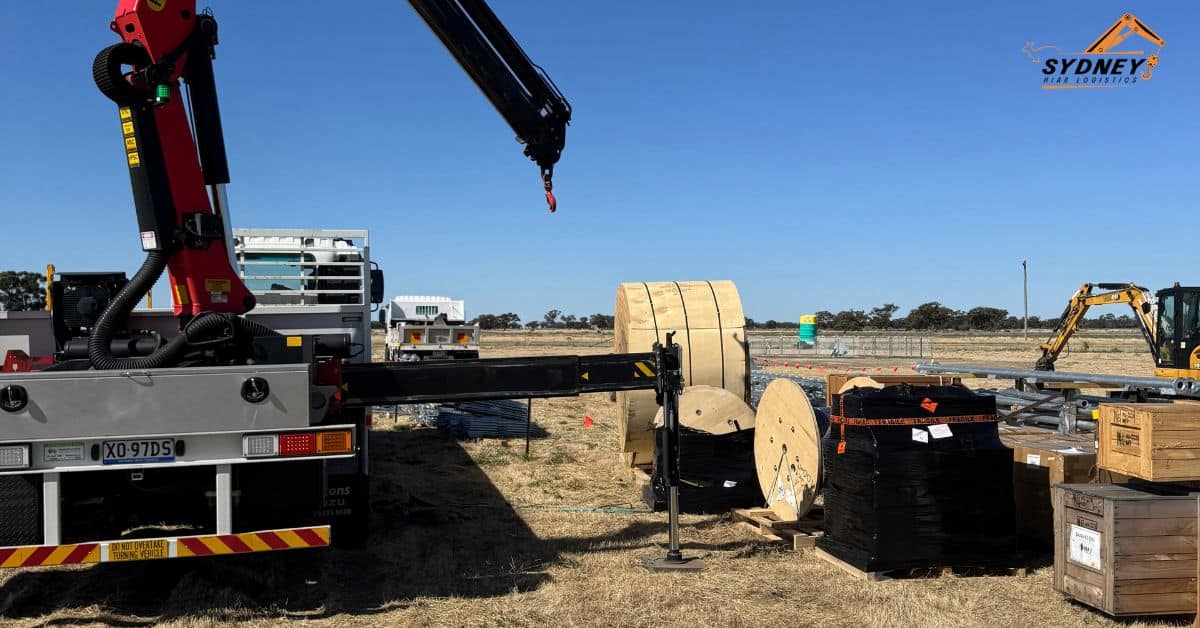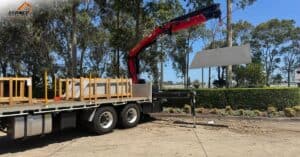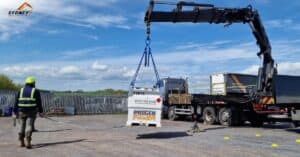Transporting cable drums—whether for electrical cables, fiber optics, or industrial wiring—is a logistics challenge that requires careful planning and attention to detail. Given their size, weight, and the delicate nature of the cables they hold, proper handling and transport are crucial to ensure that everything arrives intact and undamaged. In this post, we’ll highlight the five essential considerations for transporting cable drums successfully, providing a comprehensive guide to help streamline the process.
1. Choosing the Right Equipment
Selecting the proper transport equipment is one of the first and most critical steps when moving cable drums. These large, heavy items require specialised handling, and using the wrong equipment can lead to delays, damage, or even accidents.
Key Considerations:
- Size and Weight of Drums: Cable drums vary in size, from small spools to large, heavy drums weighing several tons. The transportation vehicle must have the right size and load-bearing capacity to accommodate the weight and dimensions of the drums.
- Loading and Unloading Gear: Cable drums are often loaded and unloaded using forklifts, cranes, or other heavy-duty machinery. The transport vehicle should be equipped with mechanisms like ramps or winches to facilitate easy loading and unloading.
- Secure Mounting: Ensure the transport vehicle has sufficient support structures (like flatbed trucks, low loaders, or specialised trailers) to stabilise the drums and prevent shifting during transit.
Why It Matters:
Using the right equipment ensures the safe transport of cable drums, reducing the risk of accidents or damage caused by improper loading or overburdened vehicles.
2. Proper Securing and Protection
Cable drums are bulky and can be unstable if not properly secured during transportation. Even minor shifts during transit can lead to damage to the cables themselves, or the drums may shift and cause accidents.
Key Considerations:
- Strapping and Chocking: Heavy-duty straps should be used to secure the cable drums tightly to the vehicle. Chocks or wedges can be placed around the drum’s ends to prevent rolling or shifting during transit.
- Padding and Cushioning: For more sensitive cables (such as fiber optic or high-voltage cables), additional padding around the drum can prevent damage from vibrations or sudden movements. This is especially important for shipments that will be exposed to rough roads or long distances.
- Even Distribution: The drums should be distributed evenly across the transport vehicle to ensure balanced weight distribution. This will prevent tipping or swaying that could damage the cargo or the vehicle.
Why It Matters:
Securing the drums properly ensures that they remain stable during transport, protecting both the cargo and the driver, and preventing any potential accidents caused by shifting loads.
3. Weather Protection and Environmental Considerations
Cable drums are often transported over long distances and can be exposed to varying weather conditions. Protection from the elements is essential, as extreme temperatures, moisture, and humidity can compromise the quality of the cables inside.
Key Considerations:
- Waterproof Covers: To shield the cable drums from rain or snow, use waterproof tarps, shrink wraps, or heavy-duty plastic coverings. This is especially critical for long-distance shipments or when transporting in unpredictable weather.
- Temperature Sensitivity: Some cables may be sensitive to extreme temperature fluctuations. If you’re transporting cables that could be affected by heat or cold, consider temperature-controlled transport options or plan the route to avoid temperature extremes.
- Ventilation: If the drums are being stored or transported in a sealed container, make sure the cargo area is properly ventilated to prevent moisture buildup and reduce the risk of mold or mildew.
Why It Matters:
Weatherproofing the drums ensures that the cables inside remain undamaged by moisture, temperature extremes, or other environmental factors that could degrade their performance or integrity.
4. Route Planning and Timing
The route you choose can significantly impact the safety, efficiency, and overall cost of transporting cable drums. Proper planning ensures that the transport avoids unnecessary delays and hazards, allowing for smoother, faster delivery.
Key Considerations:
- Road Conditions: Avoid routes with steep inclines, tight turns, or poor road conditions. These factors can cause damage to both the cables and the transport vehicle. Additionally, rough roads increase the risk of the drums shifting or tipping over.
- Traffic and Permits: Consider the time of day and potential traffic congestion, especially for large or heavy shipments. For oversized loads, check whether special permits are required and ensure these are in place before departure.
- Weather and Local Hazards: Check weather forecasts and local conditions to avoid routes affected by heavy rain, flooding, or ice. Route planning should also factor in construction zones, road closures, or detours that may cause delays.
Why It Matters:
Route planning ensures that the transport process is efficient, minimises delays, and reduces the risk of accidents. It also helps you avoid unexpected issues like road closures, which could complicate the logistics.
5. Documentation and Compliance
Proper documentation and adherence to regulatory requirements are critical for ensuring that the shipment complies with local, state, or international regulations. Without the right paperwork, your transport could be delayed at checkpoints or even subject to fines.
Key Considerations:
- Bill of Lading (BOL): This document serves as a receipt for the cargo and outlines the terms of the transport agreement. Ensure that the BOL accurately reflects the details of the cargo, including weight, type of cable, and delivery instructions.
- Customs and Import/Export Compliance: If transporting cable drums across borders, make sure to comply with customs regulations. This includes obtaining all necessary export licenses, declaring the value of the shipment, and providing commercial invoices if required.
- Insurance: Transporting cable drums carries inherent risks, such as damage or theft. Ensure the shipment is fully insured, particularly if it’s a high-value or time-sensitive delivery.
Why It Matters:
Proper documentation ensures that the shipment is legally compliant and provides protection in case of damage, theft, or other issues. It also helps streamline the process at checkpoints, minimising delays and ensuring smooth passage across borders.
Conclusion
Transporting cable drums requires attention to detail and careful planning. By considering the right truck hire company, securing the drums properly, protecting them from the elements, planning the most efficient route, and ensuring proper documentation, you can safeguard both the integrity of your cargo and the efficiency of your logistics operation. Each of these steps plays a vital role in ensuring that your cable drums arrive safely and on time, minimising the risk of delays or damage along the way. With the right approach, transporting cable drums can be a smooth and successful process, whether for small shipments or large-scale projects.




